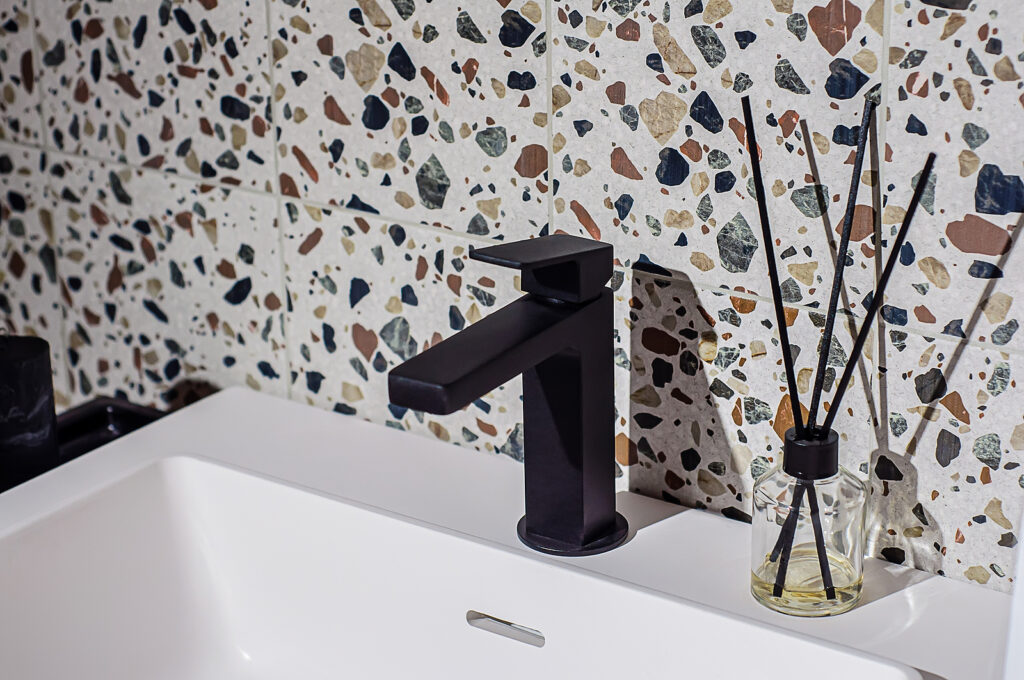There are few bathroom materials that have risen, fallen and risen again as many times as the unique, striking and durable material that is terrazzo, used either as part of waterproofing for wet rooms or in combination with accessible bath solutions.
Once an inescapable material that graced the floors and walls of legendary art deco buildings, terrazzo is a composite material made from concrete mixed with chips of marble, as well as other materials such as quartz, glass, granite and other eye-catching elements.
Once this material is cured, it is then ground and polished to create a striking, shimmering finish that is often comparable to marble.
Initially made in Venice in the 18th century, it took a while for terrazzo to gain popularity in the west, aided by three important evolutions; electric grinding to reduce the damage during the creation process, divider lines to allow the material to expand and shrink after it is installed, and the Art Deco movement.
Given that Art Deco frequently paired decorative materials with concrete, terrazzo was a perfect material for the period and was frequently used for the floors of grand architectural buildings.
It is also the style used for the stars laid on the Hollywood Walk of Fame.
Terrazzo was a dominant style icon until the 1970s when it fell out of favour just as it was becoming more affordable thanks to a new epoxy-based production method. Minimalism replaced it, and for decades the dominant style was the cream-white bathroom.
However, the rise of maximalism and changes in bathroom trends have seen terrazzo make a comeback, and whilst it perhaps should not be a dominant part of a bathroom style given how busy and disordered it inherently looks, it does have a place.
It is an ideal material to use for sinks and worktops, given its incredible strength and robustness, and paired with a more subtle marble or natural stone tile can create a bright yet relaxed space.

